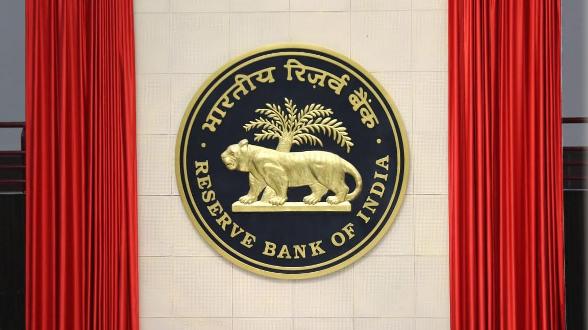Convention On Biological Diversity UPSC | Explained – The Convention on Biological Diversity, known informally as the Biodiversity Convention, is a multilateral treaty. The convention has three main goals: the conservation of biological diversity; the sustainable use of its components; and the fair and equitable sharing of benefits arising from genetic resources.

What is Biological Diversity or Biodiversity?
The term biodiversity refers to the variety of all forms of life on this planet. It can mainly be categorized into three types:
- Species Diversity: based on the number and type of organisms.
- Genetic Diversity: based on the genetic variation in a particular domain of species.
- Ecosystem Diversity: based on the habitats and linked ecological processes of the organisms.
About Convention On Biological Diversity :
- The Convention on Biological Diversity (CBD) entered into force on 29 December 1993.
- The Convention on Biological Diversity (a multilateral treaty) was opened for signature at the Earth Summit in Rio de Janeiro in 1992 and entered into effect in 1993.
- The CBD Secretariat is based in Montreal, Canada.
- It comes under the United Nations Environment Programme (UNEP).
- 195 UN states and the European Union are parties to the convention.
- All UN member states, with the exception of the United States, have ratified the treaty.
- United Nations General Assembly had declared the period 2011-2020 to be the “United Nations Decade on Biodiversity”.
It has two supplementary agreements :
- The Cartagena Protocol
- Nagoya Protocol.
It has 3 main objectives:
- The conservation of biological diversity
- The sustainable use of the components of biological diversity
- The fair and equitable sharing of the benefits arising out of the utilization of genetic resources
What is the aim of the Convention on Biological Diversity?
The main aims of the Convention on Biological Diversity are as follows:
- Sustainable development of the currently available resources.
- Fairly distributing the benefits obtained from the genetic resources.
- Increasing the value of biodiversity, i.e. make it more productive.
- Introduce the importance of the term biodiversity to the human race in general.
- State out the sovereign rights of the nations over their biological resources
- Maintain Precautions to promote and practice biodiversity conservation
- To keep a record of all the biodiversity losses and try to compensate them in any form possible.
Parties of Convention on biological diversity :
- There are 198 countries/territories who are parties of Convention on biological diversity.
- India is also a part of this convention.
- The USA has signed this convention but has not ratified it.
India And Biodiversity Conservation :
- For More Details Read – Biological Diversity Act 2002 | UPSC
Two supplementary agreements :
- The Cartagena Protocol
- Nagoya Protocol.
Cartagena Protocol
|
Came Into Force |
|
| Cartagena Protocol on Biosafety Cover Which Area |
|
| Advanced informed agreement (AIA) |
|
| Biosafety Clearing-House |
|
Nagoya Protocol
|
About Nagoya Protocol |
|
| Objective of Nagoya Protocol |
|
| Importance of Nagoya Protocol | The Nagoya Protocol will create greater legal certainty and transparency for both providers and users of genetic resources by:
|
| What does the Nagoya Protocol cover? |
|
| Core obligations of the Nagoya Protocol |
|
| COP-10 |
|
| Strategic Plan for Biodiversity 2011-2020 |
|
The Aichi Biodiversity Targets are:
- Strategic Goal A: Address the underlying causes of biodiversity loss by mainstreaming biodiversity across government and society
- Strategic Goal B: Reduce the direct pressures on biodiversity and promote sustainable use.
- Strategic Goal C: To improve the status of biodiversity by safeguarding ecosystems, species, and genetic diversity
- Strategic Goal D: Enhance the benefits to all from biodiversity and ecosystem services
- Strategic Goal E: Enhance implementation through participatory planning, knowledge management, and capacity building.
Questions And Answers Based On This Topic :
Q 1 . The Nagoya Protocol sets out core obligations for its contracting Parties to take measures in relation to
Which among the above statements is/are correct?
|
||||||||
|
Q. 2 Consider the following pairs: (2016)
Which of the pairs given above is/are correctly matched?
|
||||||||
Q 3 : Consider the following statements about Nagoya Protocol
Which among the above statements is/are correct?
|
||||||||
Solution :
|
Clean Development Mechanism :
- The Clean Development Mechanism (CDM), defined in Article 12 of the Protocol, allows a country with an emission-reduction or emission-limitation commitment under the Kyoto Protocol (Annex B Party) to implement an emission-reduction project in developing countries.
- Such projects can earn saleable certified emission reduction (CER) credits, each equivalent to one tonne of CO2, which can be counted towards meeting Kyoto targets.
The Kyoto mechanisms are:
- Clean development mechanism (CDM) at UNFCCC negotiations
- Joint implementation (JI) at UNFCCC negotiations
- Emissions trading (ET)
Source : CBD









